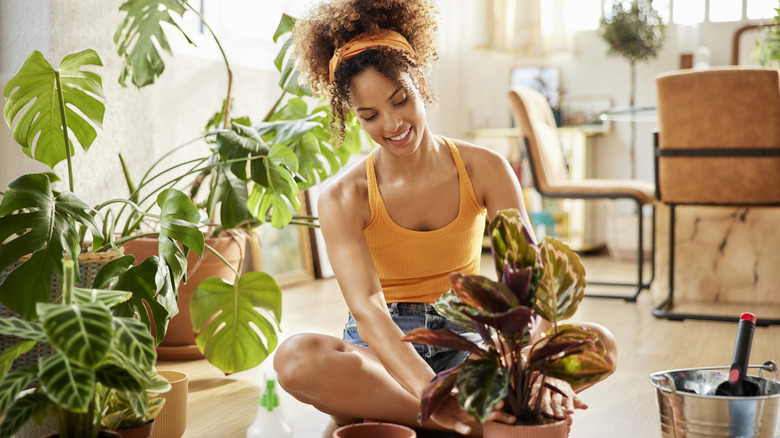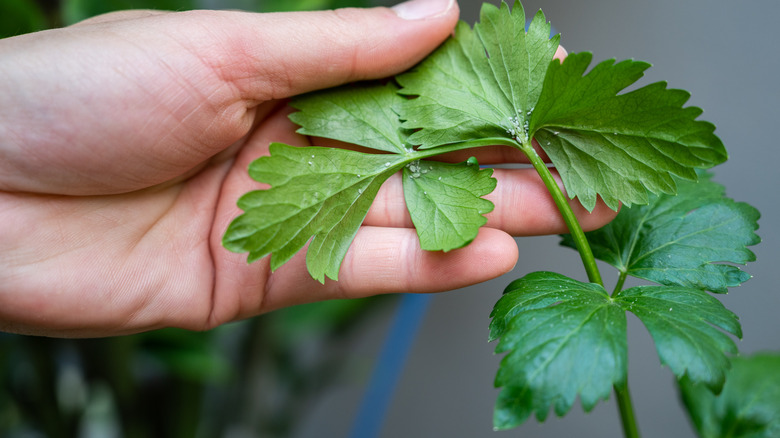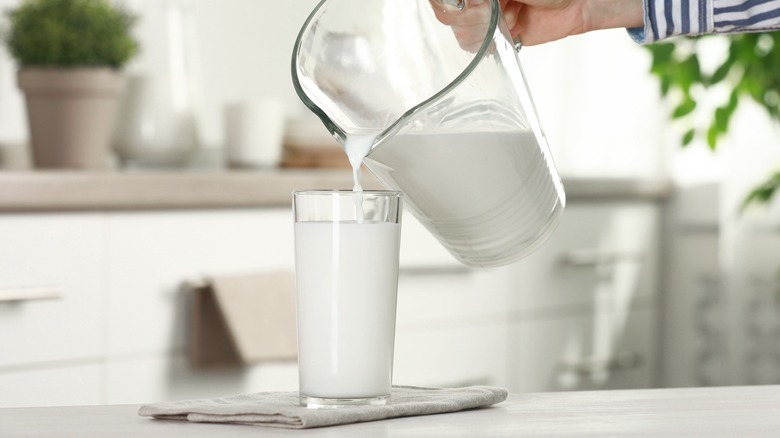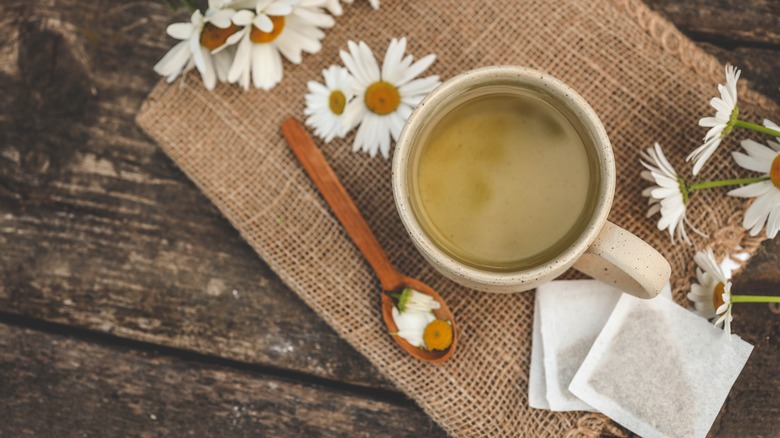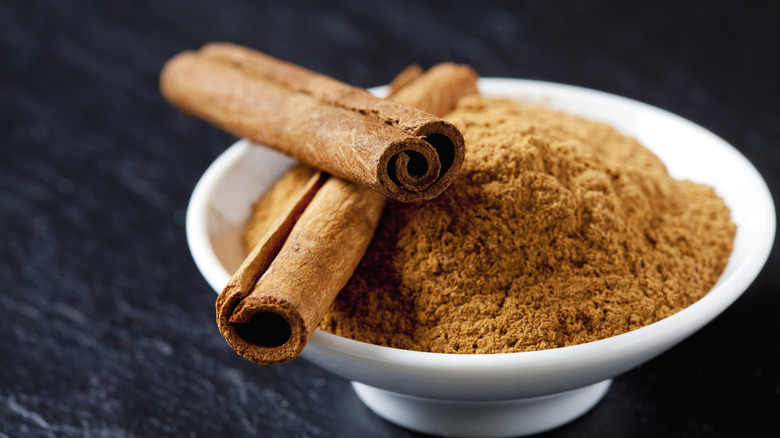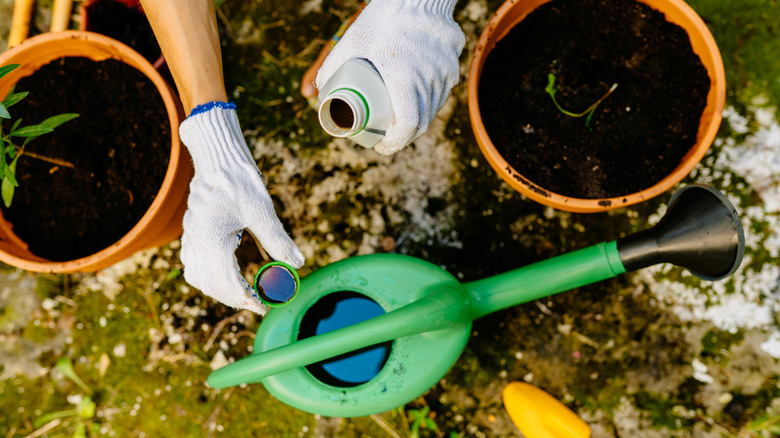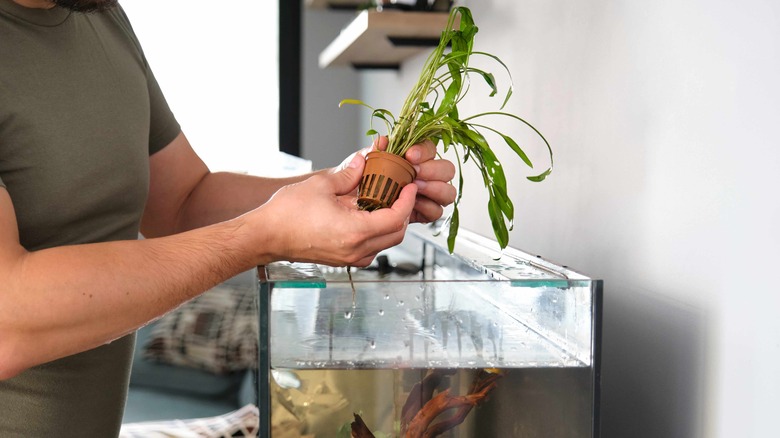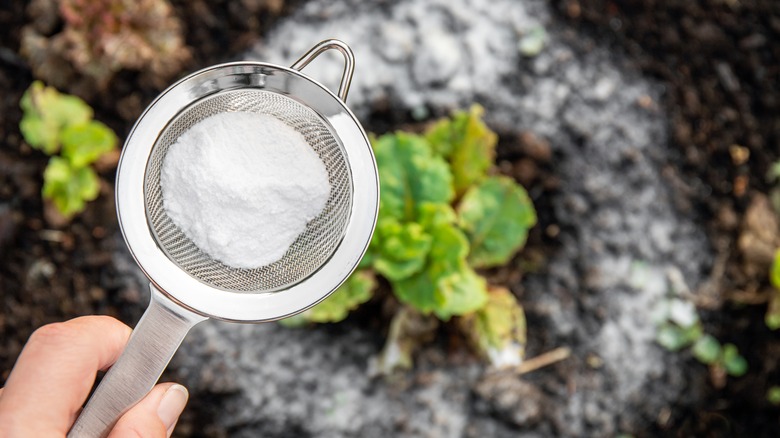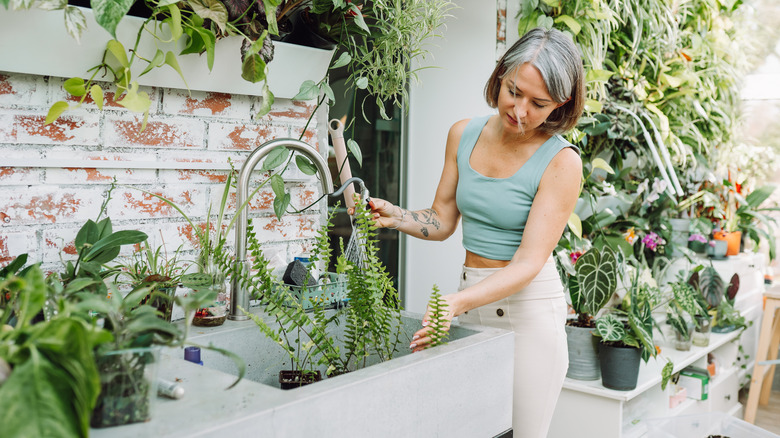9 Household Ingredients That Can Benefit Houseplants
We may receive a commission on purchases made from links.
Plant parenthood can get expensive, especially once you start diving into all of the different tools and nutrients that promise to help your green babies thrive. Many products come with tempting claims, suggesting they can give your potted plants the boost they need to grow 50 feet high and live for thousands of years. But save your money for something more worthwhile, and instead, head to your cupboards. You likely have some powerful houseplant allies already sitting on your shelves.
Here are nine of our favorite household ingredients you probably already have that can keep your plants happy and healthy. We'll explain why they're so good at doing what they do, plus give you a few tips for how to incorporate them into your plant chores.
Rubbing alcohol can remove pest infestations
Is there anything more heartbreaking — or frustrating — than realizing that your new houseplant brought unwelcome friends home with it? We doubt it. Yet pest infestations are a common problem plant parents have to deal with. There are many tried-and-true anecdotal methods for getting rid of bugs on indoor plants, but we opt to start with one of the cheapest and simplest options first: rubbing alcohol. Rubbing alcohol has the ability to penetrate the waxy shell of mealybugs and aphids, dehydrating their bodies and killing them.
If you notice a mealybug or aphid infestation, using rubbing alcohol to treat the issue is easy. Simply dip a cotton swab or microfiber cloth into the bottle and rub it over the leaves and bug colony. The bugs should fall off pretty quickly after that, but keep an eye out for any stragglers, just in case. If you have an established colony, you will have to do this multiple times over several weeks to fully eradicate them.
Carbonated water does awesome things to soil
Carbonated water or club soda is a surprisingly effective houseplant BFF. There is some evidence that using it can reduce your water and soil's pH levels, which is good for plants that prefer more acidic conditions. Also, since it's full of carbon dioxide (the thing that causes the bubbles), some researchers believe it can increase the CO2 levels of your soil, leading to better conditions for stronger root growth. Finally, CO2 from soda water can be taken in by your houseplant's roots and used during photosynthesis. That said, researchers have found evidence that carbonated water can both increase yield and not affect yield at all, so the jury's still out on whether or not this should become a staple in everyone's plant care routine. Still, anything that can help your plant photosynthesize or strengthen its root system, even a smidge, is worth giving a try.
Before you start pouring bottles of soda water into your watering can, check the label for ingredients. Some people may accidentally substitute sparkling water for club soda, but they're not the same. Some sparkling water may have additives that can help your plants, like magnesium and calcium, or hurt them, like sodium. Always double-check before incorporating anything new into your houseplant care routines to ensure you're playing it safe.
Diluted milk is a useful disinfectant for your gardening tools
Did you know that milk can act as a bodyguard, protecting your plants from devastating (and potentially deadly) viruses? To be honest, it was news to us, too. But scientists have known for years that milk can stop viruses from hopping from plant to plant and have recommended farmers use it for cleaning their harvesting tools. In particular, nonfat dry milk is really good at stopping certain types of mosaic viruses from spreading, which can severely stunt plant growth or cause deformities. There's also some evidence that spraying milk on leaves can reduce a powdery mildew outbreak on certain plants like tomatoes, but we'd recommend doing that outside, as inadvertently spraying your room and walls with milk might not work out that well.
One thing to remember, though, is that milk will not kill the virus in an already-infected plant; it just prevents the virus from jumping to another. Researchers recommend using nonfat, dry milk powder in water at anywhere from a 10-20% solution level and letting your tools soak for at least one minute. You can also add a splash of bleach, too, just to give it a little extra disinfectant boost. Be sure to properly clean your tools afterward to prevent rust.
Chamomile tea can be helpful for baby plants
Chamomile flowers are so versatile, don't you think? Not only are they great groundcovers that can help deter pests and make awesome lawn replacements,but their calming aroma is full of chemicals that can keep fungus and bacteria away from your plant's soil. Specifically, chamomile essential oil has several sesquiterpenes that combat microbial and fungal growth, including alpha-bisabolol, luteolin, quercetin, and apigenin. However, researchers have found both its oil and extract have similar bacterial and fungal killing effects, which is great for those who might have the extract already in their pantry since they use it as a supplement.
If you don't, you don't necessarily need to go out and buy a bottle. You can still achieve similar — though perhaps less effective — results using brewed chamomile tea. Several university extensions recommend adding 1 ounce of a strongly brewed tea to 1 quart of water and using that to water your plants. You can also use chamomile tea as a mist if you notice any fungus growing on the topsoil.
Cinnamon can inhibit fungal or bacterial growth in plant soil
Cinnamon is another BFF for garden and indoor plants. All it takes is a sprinkle of cinnamon to make your garden thrive because it has an uncanny ability to repel pests, knock out bacteria, and send fungus running for the hills. A 2021 study in "Molecules" looked into just how many practical uses cinnamon could have in both human and plant health, finding there was potential for cinnamon in pesticides, insecticides, bio-fungicides, you name it. If it hurts plants, the chemical makeup of cinnamon could probably take it out.
The best part is that cinnamon doesn't have to be used often, so if the scent is too strong for you, don't worry. Researchers at the University of Illinois found that even dusting cinnamon over soil once before planting worked effectively at preventing fungal growth from attacking plants. The aforementioned "Molecules" study explored using cinnamon essential oil, extract, bark, and isolated compounds, showing them all to have some level of efficacy in horticulture, so really, whatever version of cinnamon you've got will probably help your houseplants. However, for best results, make sure you use a fresh batch and not the old bottle that has been sitting in your pantry for two years.
Hydrogen peroxide protects houseplants from fungus gnats
Got a fungus gnat outbreak? They're the worst, so we sympathize. Luckily, you've got all the tools you need to fight them right in your bathroom cabinet. Hydrogen peroxide is a powerful fungus gnat foe, killing any eggs or larvae hiding in your plant's soil. Plus, it can add more oxygen to the soil, which encourages stronger roots and kills fungus or bacteria hiding in the pot. A 2023 study in "ACS Omega" tested hydrogen peroxide as a potential soil fumigant and additive for farm plots that needed to be replanted but had issues due to Apple replant disease (ARD) — an issue where newly planted crops die off due to the leftover bacteria and insects from the previous harvest. The scientists found crops planted in soil treated with hydrogen peroxide all had an increase in chlorophyll production and root antioxidant enzymes while also reducing soil enzymes and bacteria growth.
So, how should you incorporate hydrogen peroxide into your plant care routine? For noticeable fungal outbreaks, a misting of H202 should work just fine. The "ACS Omega" study tested three concentrations of hydrogen peroxide: 1.5%, 3.0%, and 4.5%, and found each level to have some efficacy. However, these were all in large-scale farming plots where the H202 was spread out across larger patches of soil. For indoor potted plants, stick to going no higher than the 3% solution and add 1 tablespoon per quart of water. There's also some anecdotal evidence that adding a few drops into water propagations may benefit root growth, but we have yet to find any academic or scientific findings that can resoundingly back this up. Regardless, it's a cheap yet awesome secret ingredient for happy houseplants that's worth experimenting with.
Aquarium water is full of nutrients plants love
If you've ever kept an aquarium before, you know that one of the bigger chores you deal with is water changes. But before you dump it down the drain, consider keeping some around to water your plants. Aquarium water is full of nitrogen, a byproduct of fish waste. While that poopy (okay, not poopy, but you know what we mean) water can get toxic to fish, plants love it. Nitrogen is one of the main nutrients plants need for making chlorophyll, hormones, and amino acids. Basically, what your plant needs to make green leaves and stems. Plus, using fish tank water instead of tap water can reduce your plant's exposure to chlorine or fluoride, additives that are especially bad for peace lilies and orchids.
But if you're not interested in keeping buckets of old fish wastewater around, there's another option: Aquaponics. This method involves growing plants from the top of your fish tank, letting the roots dangle freely in the aquarium. There's no soil involved since your plants get the nutrients they need directly from the water. Pothos, monsteras, and philodendrons all seem to do pretty well with this method, but test a cutting first and see how it works. You can use hang-on support like these Lnreug aquarium planter cups if you've already got a fish tank or go with a full, done-for-you setup, like this AquaSprouts aquaponics desktop aquarium garden. Keep in mind your plants will still need a light source above them for photosynthesis. You could put your aquarium close to a window, but this might contribute to algae growth so consider using an overhead full spectrum light meant for aquaponics. DYMOND BoostGro LED grow light is well-reviewed and relatively cheap, but even a reading or clip-on lamp with a grow light will do.
Baking soda works great for controlling mildew
Baking soda is loved by volcano science project third graders and houseplant parents alike, albeit probably for different reasons. For planty folks like us, baking soda is useful as a non-toxic option that can help control fungal outbreaks like powdery mildew. Researchers at Cornell University tested its efficacy in preventing powdery mildew on roses and found it so powerful that their findings have resulted in a recipe passed around the rose-growing community for decades that's simply called the "Cornell Formula."
The Cornell Formula says to mix two tablespoons of light horticultural oil (Sunspray oil is often recommended), one heaping tablespoon of baking soda, and one tablespoon of mild dishwashing soap into a gallon of water, then spray it on leaves to the point that they're so saturated you start to see it drip. However, you don't need to get so complicated if you don't want to; simply adding it to your soil may help prevent fungal growth. However, relying on it as a sole method for fungus control is one of the biggest mistakes everyone makes using baking soda on plants. That's because it only has fungistatic (can't kill the fungus but will prevent new growth) and not fungicidal properties. If your plant catches such a disease, its high alkalinity will stop it from growing and spreading. However, if the alkalinity levels change (i.e., the baking soda begins to deteriorate and wear off,) the fungus can begin growing again. The ratios needed also depend on the plant, its environment, and the disease. This makes your recipe a bit of a guessing game. If you add too little baking soda into your formula, the conditions won't be alkaline enough to stop the fungus from growing. But if you add too much, you can poison the houseplant with a sodium overdose. Because of this, it's best to use this as a preventative measure rather than a treatment.
Dish soap helps keep plants clean and happy
Your plants may look pretty to the naked eye, but even they need an occasional bath. Dust can accumulate on leaves and stems, stopping them from getting the maximum light possible. Less light means less chlorophyll production, limiting photosynthesis. Photosynthesis is the function that creates the glucose your plant needs to grow and thrive, so giving it as much chlorophyll as possible means a happier plant. Plus, dust can make your plants look like a nice place for spider mites to set up shop since it's clear the plant isn't fussed with much. So keep dust and creepy crawlies away by bathing your plant using mild soap and water.
Add 2 teaspoons of a mild dishwashing liquid soap to 1 gallon of water and dunk your plant's leaves in, being careful to keep the soil out. Rinse your plant's leaves just to make sure any soap residue or overlooked insects are washed away. Hairy plants like African violets might need something more vigorous to loosen dust like a cosmetic brush, but the majority of leafy tropical houseplants can handle taking a bath every three to four months just fine.
